How To Follow A Rotation Diet
This blog post is purely informational. I am not a doctor or dietitian. Please consult a doctor for all medical advice.
Have you ever heard of a rotation diet? They can be incredibly beneficial for getting more variety into your diet, and managing food intolerances! Let’s dive deeper into how to actually follow one.
First, What Is A Rotation Diet?
The type of rotation diet that I’m referring to is switching up the foods that you eat on roughly a 4-day rotation to ensure that you’re not eating the same foods every day. Rotation diets alone do not reverse food intolerances. Rather, they help ferret out food intolerance, calm inflammation while you’re healing your gut, and prevent you from forming new intolerances.
It’s not about calories, restriction, or perfection. It’s about getting a variety!
Why Rotate Your Foods?
1.We are biologically designed to rotate foods.
Man is meant to eat with the seasons. We are not designed to eat avocado every single day, because nature does not allow for it. In nature (or even 100-150 years ago) we ate what was local and available. We couldn’t drive to Walmart and get whatever we wanted that was flown in from all corners of the Earth at any time.
To be cliche but honest… eating the same thing every day is not “Paleo”.
2. Rotation allows for more nutrient diversity.
If we eat avocado as our main source of fat every day, we’re missing out on all of the healthy fats in olive oil, coconut, and beef tallow. Different foods come with different nutrients and we need variety for vibrancy!
Our ancestors ate hundreds of food a year… we eat a small handful and have maybe 20 in our weekly rotation if that.
How to follow a rotation diet
Work with a practitioner
As always, you must get approval and guidance from a doctor before making any changes to your diet. I am not a doctor. This post is purely informational to give you ideas for what a rotation diet looks like in the context of meals!!
Start with a 3-4 day rotation
When introducing foods and playing with food intolerances, the gold standard is 3-4 days to gauge a reaction and give your system time to process it. Of course, that varies from person to person, but 3-4 days is a good starting point.
So, how does that work?
For example…
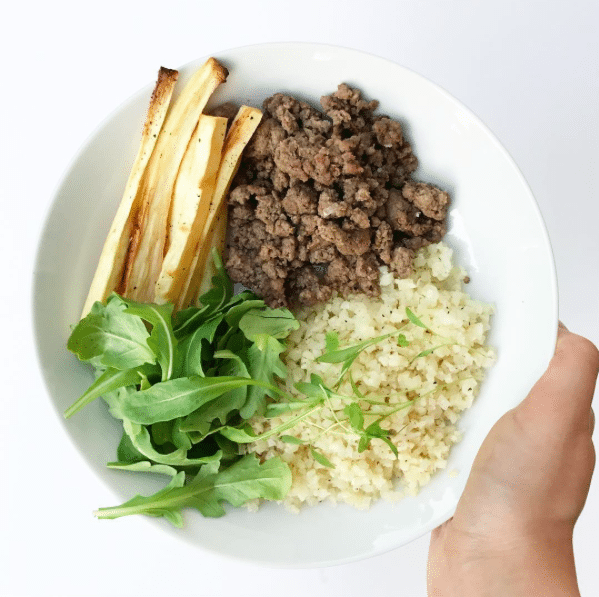
Monday – Bison, cauliflower, arugula, cilantro, parsnip, coconut oil
Tuesday – Salmon, zucchini, cabbage, ghee, blueberries
Wednesday – Sardines (or another fish), onion, greens, kraut, avocado, strawberries (I have cheese on this salad which is not typically on many healing diets, but I’ve reintroduced it)
Thursday – Beef, leeks, carrots, beef tallow, apples
And on Friday, it starts over again from Monday! Obviously, you can add in more things on Friday than just what you ate Monday… that’s just the next time you’d be eating bison and the rest again.
Track and plan
Sit down every Saturday and make a plan for the week, and consider all factors. Are there any crazy nights that week? Will you be eating out one day? Write out what you plan to eat for each day of the week, and use Sunday to prep. I use the notes in my iPhone to make a rough plan like the one above!
You want to track any symptoms throughout the week. As time goes on, it will become easier to see patterns and ferret out anything that isn’t working.
Simplify your meals
I know these gorgeous bowls on Instagram with 7 different kinds of vegetables in ⅓ cup portions each look appetizing. In reality, that’s not what you want to be doing if you’re following a rotation diet.
Structure your meals to be a protein, 1-2 vegetables, and healthy fat. Keep it simple to give yourself more options to rotate! It’s easier to prep and can be just as delicious.
The freezer if your friend
Let’s say you make a big nourishing soup with tons of veggies and eat it on Monday. You’re not feeling like playing with eating it two days in a row, and would rather wait until Friday, but don’t want to waste it. Throw it in the freezer!
This is one of the easiest ways to plan ahead and stop wasting foods when you’re trying to get into a rotation habit. Most foods like meatballs, soups, and roasted veggies freeze well, especially if you’re only keeping it in there for a week or two.
Eat seasonally
Eating with the seasons is what nature intended us to do, and one of the best things to compliment a rotation diet. Go to a farmers market, or do a quick search every couple of weeks to see what’s seasonal that you can enjoy, rather than just buying the same things over and over again. Even if you’re on a four-day rotation, that doesn’t mean that eating the same things that are not always in season within that rotation is the best course of action.
I try not to buy things like watermelon or pumpkin out of season, and really enjoy it when it’s in season. That way, if I happen to eat a lot of it over those weeks when it’s seasonal, I don’t really sweat it as this is what nature intended to do!
Don’t overcomplicate it if you don’t have to
I know what you’re thinking… “Are beef and bison too close? What about turkey and chicken? Or all cruciferous vegetables?” It can get complicated.
Start small. Especially in the beginning! The beauty of following this sort of plan is that you do really start to figure out your triggers. If you start to realize that chicken and turkey back to back produce some sort of reaction for you, then you can adjust.
However, when you’re just starting out, the goal is to just get in some variety and get in the habit of not having the same thing day in and day out.
Perfection is not required
Eating sweet potato two or three days in a row isn’t the end of the world. Don’t beat yourself up if you do. Even if you eat it several times a week, try and take the next week or two off. The point is that you’re not eating sweet potato every single day of your life, and not to be perfectly rotating on a four-day rotation for the rest of your life.
I remember I would get so mad at myself if I ate the same foods back to back. But in reality… nothing happened unless I ate it every day for weeks and weeks and already had a tendency to have issues with it. Tiny slip-ups are fine and you don’t have to be perfect every single day. The goal is variety, not perfection.
It is hard… until it becomes a habit
When I first started doing this, I was cognizant of everything I was eating down to the oil and spice. It was a pain, and I felt obsessed and exhausted. For some folks, it can be too triggering of bad habits, which is certainly reason to reconsider doing it.
However, all new health ventures are hard. Whether it be going gluten-free, picking up running, or following a rotation diet, it’s hard at first… until it becomes a habit.
Eventually, you’ll start to get the hang of it to where it becomes second nature. These days, I just don’t want to cauliflower every day. I keep it in the freezer and only pull it out once or twice a week. I don’t have to think about it every day. It takes time to get to the point where it just becomes a habit to rotate your foods, but you will get there.
Do you have to follow it forever?
Like I said above, eventually, it becomes a habit to not eat the same foods every day. For me personally (and what I recommend) is to follow it more strictly, in the beginning, to get into the habit while you’re following a more structured healing protocol, and then just be mindful about it going forward.
As time goes on, you’ll figure out the foods that you don’t have to be as mindful about and your body just tends to do well with (for me, I know I always tolerate beef and salmon very well) and the foods that you have to be more careful with (for me, it’s reintroductions like cheese and almonds). You’ll eventually find your own rhythm, but more variety is always a good template to try and follow.
Is a rotation diet for everyone?
Of course not. Not everyone is in a place where they can start doing it full force if they’re already down to very little foods or have issues with restriction. I also wouldn’t recommend it if you’re just starting out with a real food diet.
However, I think it’s important for all of us to learn from this template to focus on getting more variety and not eating the same thing every day!
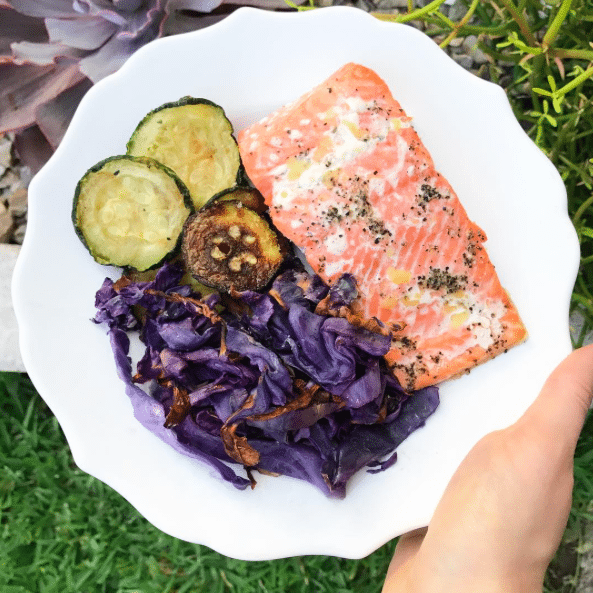
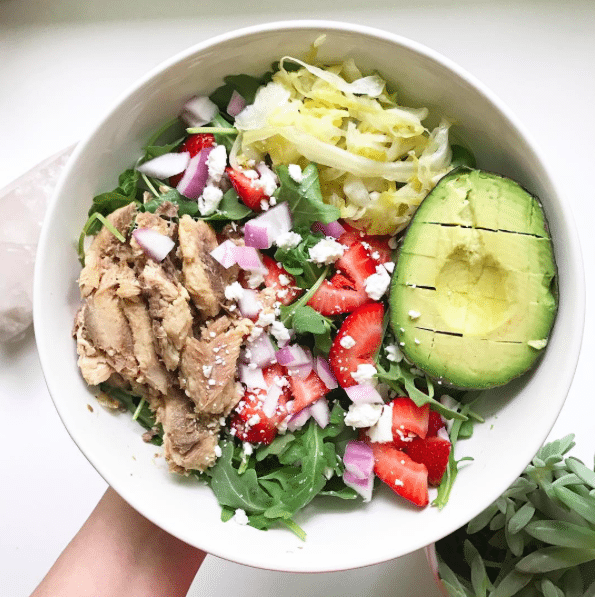
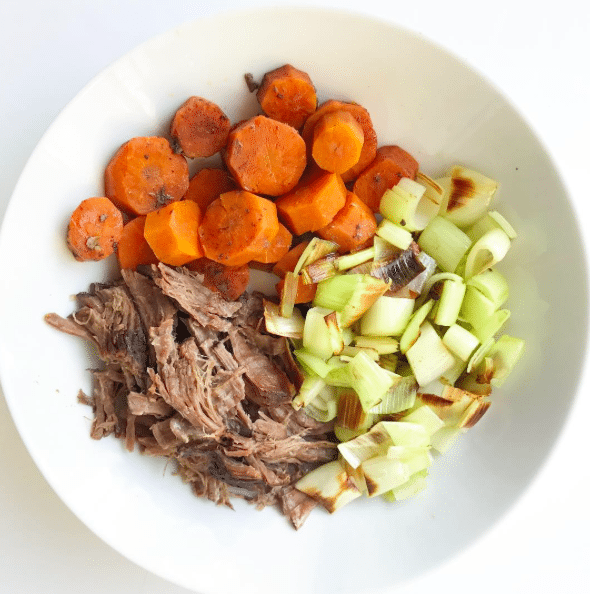


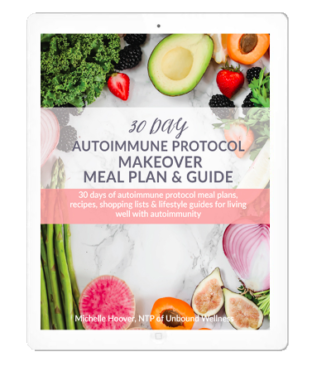


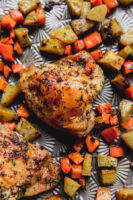


Hi Michelle,
Thanks for a great post, I’ve never actually heard of a rotation diet before! But it definitely makes sense. My question is: would it also work to do say 3-4 days of the same/similar foods then 3-4 days of different foods. Rather than changing every day?
Ciara
I love how you made this so easy to understand and gave examples! Thank you, Michelle!
Thanks for this post! My question is what do you do for the other two meals each day? Are they also composed of the same ingredients and then switch the next day? Or is each meal supposed to be different, yet each day also different?
Pingback: Oven Roasted Baby Bok Choy (Paleo, Whole 30, AIP) - Unbound Wellness
What about spices, Michelle? And can you tell me if I am supposed to eat something different at every meal for 3-4 day periods, or can I have the same foods on the same day and switch it up for the next day? Thanks so much!
Like the idea of mixing up what we eat — but we need to get over this ancestor thing. We are simply not living like they lived anymore. Period.
What’s funny to me is there are cultures that eat the same thing everyday and they thrive. They don’t sweat this kind of stuff. They just eat what they want and stay active.
This was so helpful and eased my “must do this perfectly” mind. Thanks a million!!